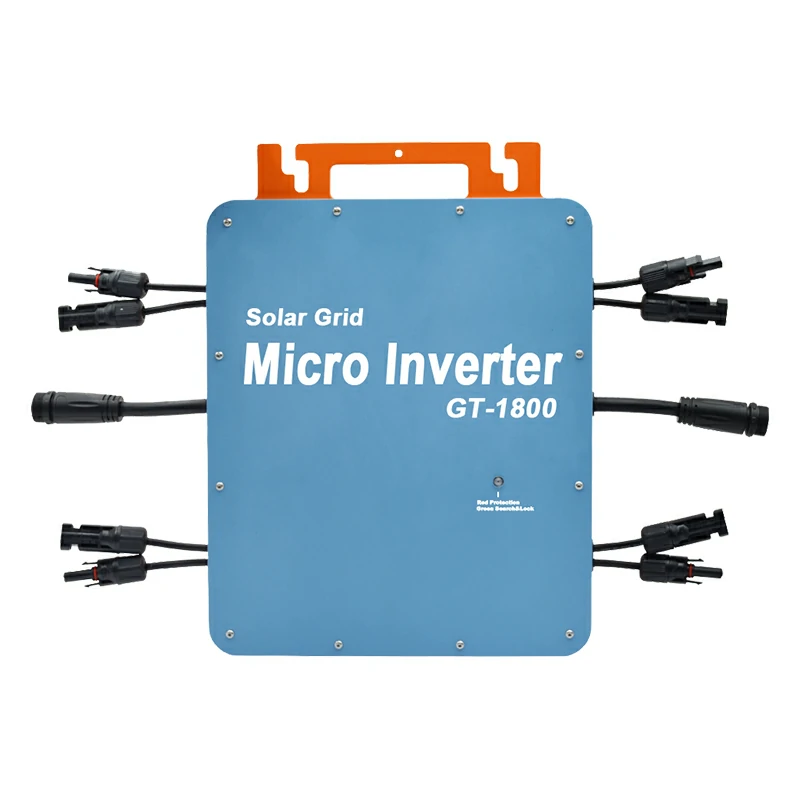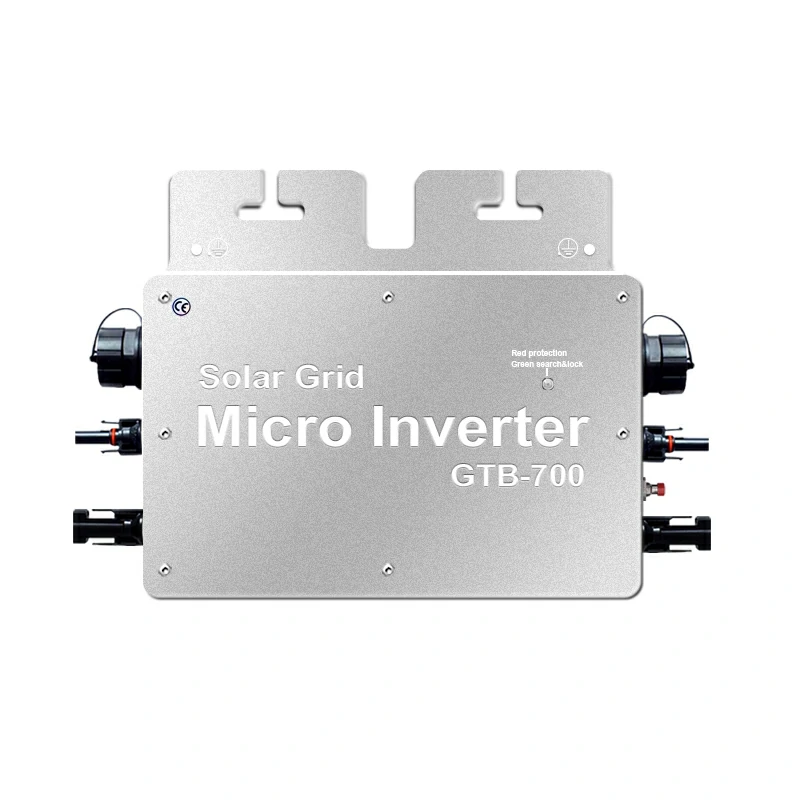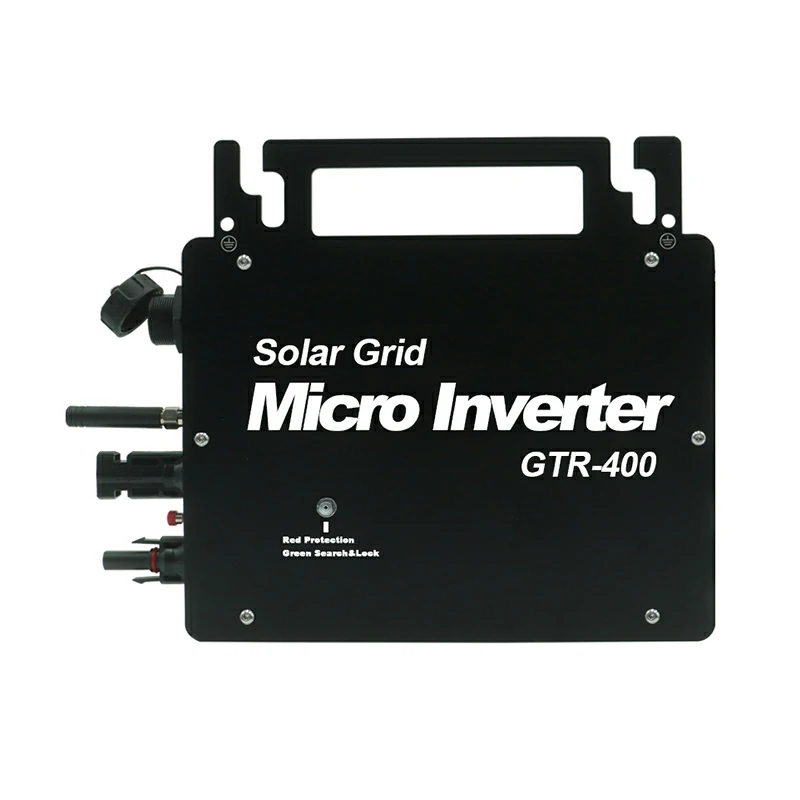Introduction
In the rapidly evolving world of renewable energy, micro-inverters have emerged as a critical component in maximizing the efficiency and reliability of solar power systems. Unlike traditional string inverters, micro-inverters convert direct current (DC) to alternating current (AC) at the individual solar panel level, offering numerous advantages. This article delves into how micro-inverters integrate with smart grid and energy storage solutions, providing potential buyers with valuable insights into their benefits and applications.

1. Understanding Micro-Inverters
A micro-inverter is a small device attached to each solar panel in a photovoltaic (PV) system. Its primary function is to convert the DC electricity generated by the panel into AC electricity, which can be used by household appliances or fed into the power grid.
Comparison with String Inverters and Central Inverters
Traditional string inverters connect multiple solar panels in series, converting the cumulative DC output into AC at a single point. In contrast, micro-inverters operate independently on each panel, allowing for greater flexibility and performance optimization. Central inverters, often used in large-scale solar farms, perform a similar function but at a larger scale and centralized location.
Key Advantages of Micro-Inverters
- Increased Energy Yield: By optimizing each panel’s output independently, micro-inverters can significantly boost overall system efficiency, especially in partially shaded conditions.
- Enhanced Safety: Operating at lower voltages reduces the risk of electrical hazards.
- Improved Monitoring: Micro-inverters provide granular, panel-level monitoring, allowing for precise performance tracking and maintenance.
2. The Smart Grid: An Overview
The smart grid represents the next generation of electrical power infrastructure, incorporating advanced communication and automation technologies to enhance the reliability, efficiency, and sustainability of electricity distribution.
Definition and Components of the Smart Grid
The smart grid integrates various technologies, including advanced metering infrastructure (AMI), grid management software, and distributed energy resources (DERs). These components work together to enable real-time monitoring and control of the power network.
Benefits of a Smart Grid
- Real-Time Monitoring: Enhanced visibility into grid performance helps in quick identification and resolution of issues.
- Demand Response: The ability to adjust power supply in response to demand fluctuations ensures stability and prevents blackouts.
- Improved Grid Stability: Better integration of renewable energy sources, such as solar and wind, contributes to a more resilient grid.
3. Integration of Micro-Inverters with the Smart Grid
Real-Time Data Collection and Communication
Micro-inverters play a crucial role in the smart grid by providing real-time data collection and communication capabilities. Each micro-inverter is equipped with a communication interface that transmits performance data to a central monitoring system. This data can be used to optimize energy production, detect faults, and improve overall system efficiency.
Impact on Grid Stability and Efficiency
By integrating micro-inverters with the smart grid, utilities can better manage the variability of solar power. Micro-inverters help balance supply and demand, reducing the need for backup power sources and improving grid stability. This integration also allows for more efficient use of renewable energy, reducing reliance on fossil fuels.
Smart Grid Technologies Compatible with Micro-Inverters
Several smart grid technologies work seamlessly with micro-inverters, including:
- Advanced Metering Infrastructure (AMI): Enables two-way communication between utilities and consumers, facilitating better energy management.
- Grid Management Software: Analyzes data from micro-inverters to optimize grid performance and enhance reliability.
- Distributed Energy Resources (DERs): Micro-inverters integrate easily with other DERs, such as wind turbines and battery storage systems, creating a more robust and flexible energy network.
4. Energy Storage Solutions: An Overview
Definition and Types of Energy Storage Solutions
Energy storage solutions are technologies that store energy for later use. They come in various forms, including:
- Batteries: Commonly used in residential and commercial solar installations to store excess energy.
- Thermal Storage: Stores energy in the form of heat, which can be used for heating or converted back into electricity.
- Pumped Hydro Storage: Uses excess electricity to pump water to a higher elevation, which can later be released to generate electricity.
Importance of Energy Storage in Balancing Supply and Demand
Energy storage is essential for maintaining a balance between energy supply and demand, especially with the intermittent nature of renewable energy sources. By storing excess energy during periods of high production and releasing it during periods of high demand, energy storage solutions ensure a stable and reliable power supply.
Benefits of Combining Energy Storage with Solar Power Systems
Integrating energy storage with solar power systems offers several benefits:
- Energy Independence: Reduces reliance on the grid by providing a backup power source.
- Cost Savings: Allows for energy usage during peak hours when electricity rates are higher, reducing overall energy costs.
- Backup Power: Provides a reliable source of power during outages, ensuring continuity of operations.
5. Integration of Micro-Inverters with Energy Storage Solutions
Managing Power Flow
Micro-inverters facilitate efficient management of power flow between solar panels, energy storage systems, and the grid. During periods of excess solar production, micro-inverters can redirect surplus electricity to charge batteries or supply power to the grid. Conversely, when solar production is low, energy stored in batteries can be discharged through micro-inverters to meet demand or support grid stability.
Compatibility with Energy Storage Systems
Micro-inverters are compatible with various energy storage systems, enhancing their functionality and overall effectiveness. They ensure seamless integration and optimize the use of stored energy, contributing to greater energy efficiency and reliability.
Benefits for Homeowners and Businesses
For homeowners and businesses, the integration of micro-inverters with energy storage solutions offers several advantages:
- Energy Security: Provides a reliable backup power source during grid outages or emergencies.
- Financial Savings: Reduces electricity bills by storing and using solar energy when rates are highest.
- Environmental Impact: Minimizes reliance on fossil fuels and reduces carbon footprint by maximizing renewable energy usage.
6. Case Studies and Real-World Applications
Successful Integration Examples
Several real-world examples demonstrate the successful integration of micro-inverters with smart grid and energy storage solutions:
- Residential Applications: Homeowners benefit from increased energy independence and savings through combined solar and energy storage systems equipped with micro-inverters.
- Commercial Installations: Businesses achieve operational resilience and cost efficiency by integrating micro-inverters with sophisticated energy management systems and battery storage solutions.
- Utility-Scale Projects: Large-scale solar farms leverage micro-inverters to enhance grid stability and maximize energy production, contributing to sustainable energy transitions on a regional scale.
Benefits, Challenges, and Solutions
While the integration of micro-inverters presents numerous benefits, it also poses challenges such as compatibility issues and initial costs. However, advancements in technology and collaboration between micro-inverter manufacturers and energy solution providers continue to address these challenges, making integrated systems more accessible and cost-effective.
7. Key Considerations for Buyers
Factors to Consider When Purchasing Micro-Inverters
When evaluating micro-inverters for integration with smart grid and energy storage solutions, buyers should consider the following factors:
- Compatibility: Ensure that the micro-inverters are compatible with existing solar panels, energy storage systems, and smart grid technologies.
- Scalability: Assess whether the micro-inverters can scale to meet future energy needs and expansion plans.
- Reliability: Choose micro-inverters from reputable micro-inverter manufacturers known for reliability, performance, and customer support.
- Integration Support: Check if the manufacturer provides integration support and compatibility testing with other system components.
- Cost-Effectiveness: Evaluate the total cost of ownership, including installation, maintenance, and operational costs, to determine the long-term economic benefits.
Manufacturer Reputation and Support
Selecting a trusted micro-inverter manufacturer is crucial for ensuring product reliability and ongoing support. Look for manufacturers with a proven track record in the industry, certifications, and positive customer reviews. Good manufacturer support can streamline installation, optimize system performance, and provide peace of mind for buyers.
8. Future Trends and Innovations
Emerging Technologies in Micro-Inverters and Energy Solutions
The future of micro-inverters and their integration with smart grid and energy storage solutions is promising, driven by technological advancements and innovations:
- Enhanced Efficiency: Continued improvements in micro-inverter efficiency and performance, maximizing energy yield and grid stability.
- Smart Integration: Integration with artificial intelligence (AI) and machine learning (ML) algorithms for predictive maintenance and energy optimization.
- Battery Technology: Advancements in battery storage technology, such as higher energy density and longer lifespan, enhancing overall system reliability and efficiency.
Predictions for the Market
As renewable energy adoption grows, the demand for integrated solar solutions, including micro-inverters, is expected to rise. Market trends indicate a shift towards decentralized energy systems and increased investment in smart grid infrastructure, driving innovation and competitiveness among micro-inverter manufacturers.
Conclusion
In conclusion, the integration of micro-inverters with smart grid and energy storage solutions represents a significant advancement in renewable energy technology. By maximizing energy efficiency, enhancing grid stability, and providing reliable backup power, micro-inverters offer compelling benefits for homeowners, businesses, and utilities alike. As you consider purchasing micro-inverters, understanding their integration capabilities with smart grid technologies and energy storage solutions will empower you to make informed decisions that align with your energy goals and sustainability objectives.




